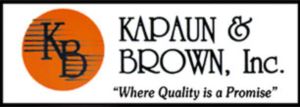
A furnace is almost always a background player for your home, keeping you warm in the cold winter months. It regularly doesn’t get noticed until a malfunction appears.
One source might be that your furnace has a cracked heat exchanger. It can be a safety risk, so it’s worthwhile to familiarize yourself with the evidence of a cracked heat exchanger and what you should do if you are worried that may be the problem.
What Is a Heat Exchanger in a Furnace?
A heat exchanger transfers heat from the combustion chamber of your furnace to the air that flows inside the ventilation. It typically handles this using coils or tubes that heat up the air while serving as a barrier to keep the gasses created in the combustion chamber, called flue gasses, from leaking out into your home.
Is a Cracked Heat Exchanger Dangerous?
Given its key role, it’s no surprise that a cracked heat exchanger can be very dangerous. A crack in the heat exchanger can permit dangerous gasses – including carbon monoxide, which can be lethal – to flow throughout your home.
For obvious reasons, never run your furnace if you believe there's a crack in the heat exchanger, as letting it run could make your entire household sick. Call an HVAC professional as soon as possible if you believe your heating has a cracked heat exchanger that needs to be repaired.
Four Symptoms of a Cracked Heat Exchanger:
- Furnace turns off: A cracked heat exchanger could cause your furnace to shut off.
- Unusual Smells: If the air leaving your furnace has an intense chemical scent, it may be evidence gas is slipping through cracks in your heat exchanger. These byproducts, which may smell like formaldehyde, are a common warning sign.
- Carbon monoxide alarm initiates or you recognize poisoning symptoms: If a cracked heat exchanger is releasing carbon monoxide inside your home, your carbon monoxide alarm should go off or family members could experience signs of carbon monoxide poisoning. Complications include headaches, dizziness, weakness, nausea, vomiting or feeling drowsy. If the alarm goes off or you feel unusually tired, leave the home as soon as you can and then call for help.
- Soot: If you see black sooty accumulating around the exterior of your furnace, it’s another sign something may be seriously wrong.
What You Should Do if Your Furnace Heat Exchanger is Cracked
If you believe your furnace has a cracked heat exchanger, hire a professional well versed in furnace installation Marshalltown right away so they can take a look at your system and, if required, perform a furnace heat exchanger replacement. Costs will differ depending on the situation, but estimates can roughly suggest $1,000 to $3,000.
Estimates aside, the good news is that heat exchangers are often covered by the warranty. It's a good idea to check the warranty paperwork on your furnace, since while the warranty won't always cover the entire cost of repairs, it could significantly shrink your bill.
How to Avoid a Cracked Heat Exchanger in Your Home
One of the easiest ways to prevent a problem in your furnace overall is via consistent furnace maintenance. Furnaces work the best when they run efficiently. Contacting a trained professional to inspect your furnace for broken-down parts, dirty filters and other potential problems can keep you from getting a big bill later on.
It’s also beneficial to inspect your furnace filters every few months – it’s recommended some filters be replaced every 90 days or sooner if they are dirty or grimy. While the filters aren't a part of the heat exchanger itself, the strain of drawing air through a clogged filter makes the entire furnace work harder to do its job. And the harder your furnace works, the more wear and tear parts like the heat exchanger will experience.
